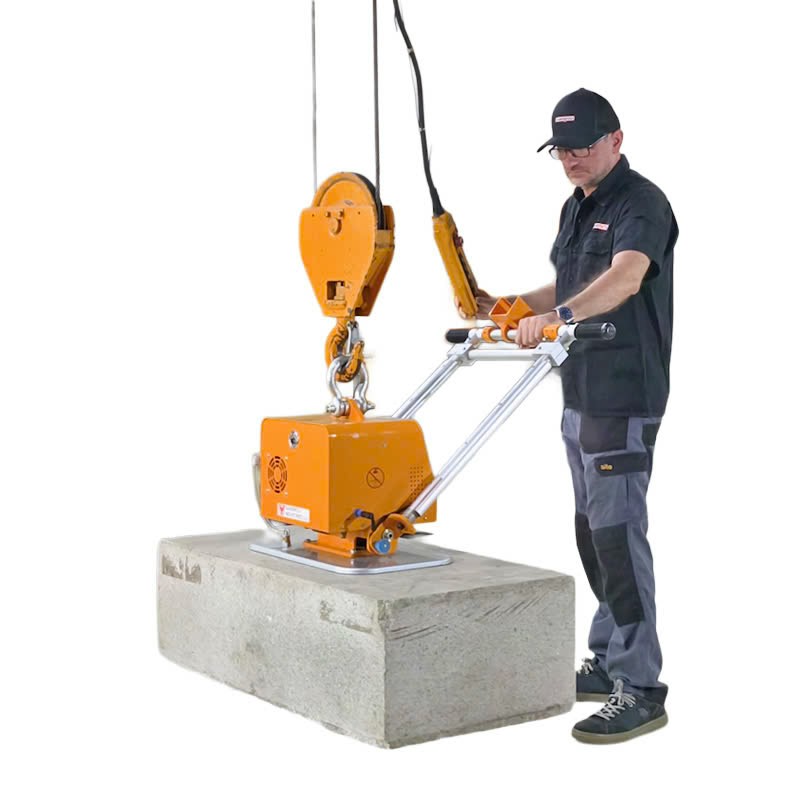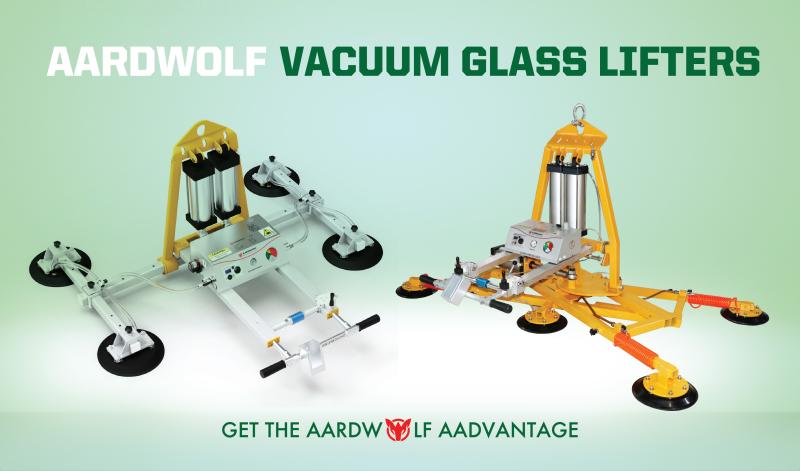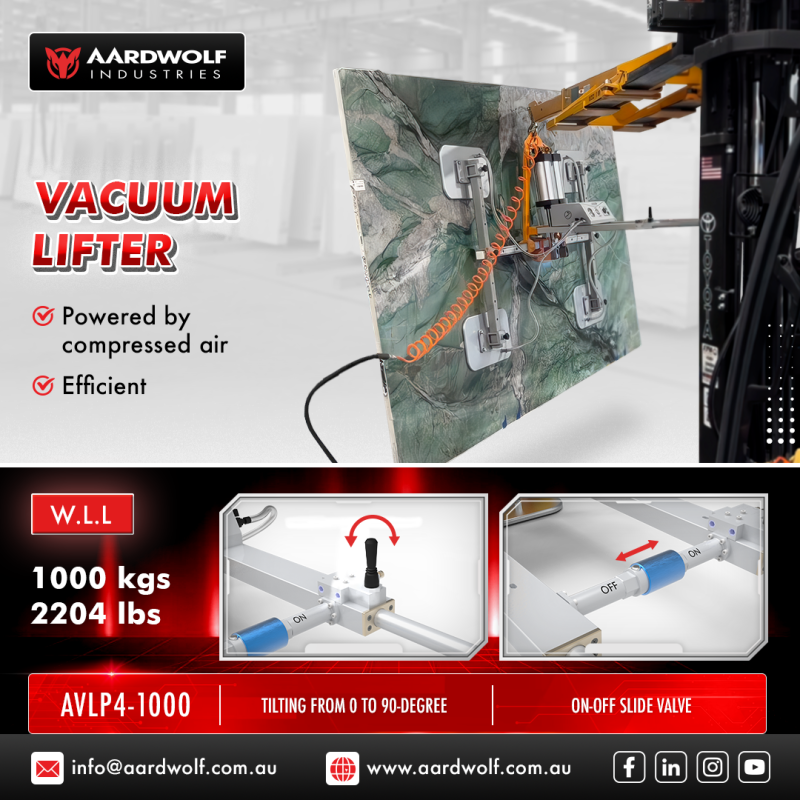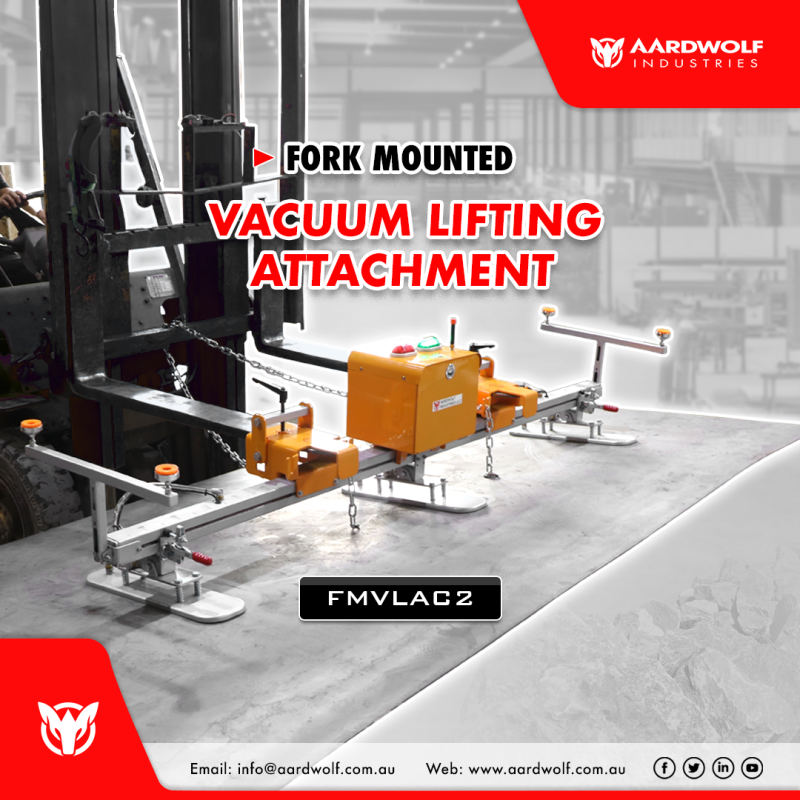


.png)
These innovative devices combine high-performance engineering with advanced suction technology to provide a safer, faster, and more efficient method for lifting and transporting various objects. But what is a vacuum lifter used for, and why is it becoming the gold standard in industrial lifting solutions?
A vacuum lifter is a mechanical lifting device that uses suction power to grip and lift materials such as metal plates, stone slabs, pipes, glass sheets, and concrete elements. The suction is created using a vacuum pump or generator, which draws air from the suction pad(s), forming a strong seal between the pad and the object’s surface.
Construction and Infrastructure
For lifting concrete pipes, paving slabs, stone steps, and precast wall elements.
Manufacturing and Fabrication
Moving sheet metal, glass panels, and composite materials during assembly.
Warehousing and Logistics
Palletizing, depalletizing, and transferring heavy packaged goods.
Energy and Utilities
Installing wind turbine blades, solar panels, or heavy steel structures.
Oil & Gas / Petrochemical
Handling steel pipes and coated pipes for offshore and refinery operations.
One of the most significant uses of vacuum lifters is lifting heavy-duty materials while minimizing risk. Traditional lifting methods such as slings, chains, and hooks can be hazardous, especially in wet or windy conditions. Vacuum lifters provide a secure grip that does not rely on force or impact.
Used to lift concrete blocks, steel plates, timber panels, and stone slabs.
Ideal for environments where overhead clearance or load stability is crucial.
Avoids the need for workers to manually secure loads.
Vacuum lifters are also used for delicate materials like glass, polished marble, or coated metals. Their soft rubber suction pads distribute weight evenly and eliminate surface damage caused by mechanical clamps or hooks.
Maintains surface integrity of high-finish materials.
Prevents scratches and coating damage.
Used in glass fabrication, clean rooms, and aluminum panel handling.
A top application of vacuum lifters is improving safety during lifting operations. Workers no longer need to crawl under suspended loads to attach or release lifting gear. Wireless remote controls and hydraulic rotators allow operators to work from a safe distance.
Eliminates manual intervention in dangerous zones.
Prevents falling object accidents.
Enhances operator confidence and safety compliance.
Vacuum lifters streamline material handling by simplifying the attachment and release process. With interchangeable suction pads and compatibility with cranes, forklifts, and excavators, operators can lift a wide variety of objects quickly.
Reduces installation time.
Enables fast switching between load types.
Boosts throughput on construction sites and in factories.
Battery-powered and pneumatic vacuum lifters are suitable for environments where electricity isn’t readily available. These models maintain lifting performance
Suitable for chemical plants and offshore rigs.
Works even in explosive or high-humidity zones.
No need for external power sources in many models.

Vacuum lifters equipped with hydraulic rotators allow 360-degree movement and tilting, ensuring the object is placed exactly where it’s needed. This is essential for installing large panels, pipes, or equipment with tight tolerances.
Full load control in all directions.
Ensures accurate placement without additional lifting attempts.
Prevents collisions and material damage.
Modern vacuum lifters use wireless controls to improve operational efficiency. Operators can lift, tilt, and release loads without being in direct contact, increasing both speed and safety.
Remote activation from a safe distance.
Useful in confined or dangerous job sites.
Enhances team communication.
One vacuum lifter can be used for many materials by simply changing the suction pads. These pads are designed for a wide range of sizes, diameters, and surface types.
Lift pipes, sheets, plates, slabs with one device.
Reduces the need for multiple tools.
Custom pad designs are available for unique load shapes.
Traditional lifting methods can stress or scratch materials. Vacuum lifting distributes the load across the entire contact area and avoids point-loading, preserving the structural and aesthetic integrity of materials.
No contact with metal clamps or hooks.
Rubber pads ensure even pressure.
No need for edge protectors or fillers.
Electric vacuum lifters produce zero emissions and significantly lower noise levels. This improves working conditions, particularly in enclosed environments such as warehouses, factories, and urban construction sites.
Ideal for indoor and regulated environments.
Enhances communication among teams.
Supports green building practices.
Vacuum lifters are engineered to operate effectively in harsh environments, including rain, snow, and high heat. This reduces downtime and avoids delays in outdoor projects.
Weather-sealed components.
Reliable performance in challenging weather.
Ideal for 24/7 construction and industrial operations.

Safety is a top priority for modern lifting systems. That’s why vacuum lifters come loaded with features designed to protect your staff and equipment.
If the vacuum level drops below a safe threshold, alarms alert the operator to safely lower the load before detachment.
Provides early warning of vacuum loss.
Allows controlled reaction time.
Prevents load drops and injuries.
Even in a sudden power failure, the vacuum tank provides enough suction to hold the load until it is safely placed.
Maintains suction pressure temporarily.
Offers a margin of safety during emergencies.
Essential for suspended loads in critical operations.
Pipe Laying in Civil Projects: Suction pads secure large steel pipes, allowing easy lowering into trenches.
Glass Facade Installation: Electric lifters with 8 suction cups and rotators are used to place tall glass panels on skyscrapers.
Shipbuilding: Vacuum lifters handle large metal plates with absolute control during assembly.
Warehouse Palletizing: Small vacuum tube lifters pick up boxes, cartons, and drums quickly with minimal operator effort.
Solar and Wind Energy: Panels are lifted and aligned with precision, enhancing productivity in green energy projects.

Investing in vacuum lifters isn't just about efficiency—it’s a strategic decision for long-term ROI. Here's why:
Reduced Labor Costs: Fewer operators are needed per lift.
Lower Injury Rates: Minimizing manual lifting reduces medical and compensation costs.
Faster Installation Times: Cut project timelines and increase project turnover.
Equipment Longevity: Materials last longer due to minimal damage during handling.
So, what is a vacuum lifter used for? From construction sites to advanced manufacturing floors, vacuum lifters are transforming how we move the world—safer, faster, and smarter. Whether you're working with concrete slabs, steel pipes, or glass panels, vacuum lifters offer an unmatched solution for modern lifting needs.

By eliminating manual handling, reducing damage risk, and operating safely in diverse environments, vacuum lifters are not just a tool—they're an investment in the future of industrial performance.References
1. How to operate a Jib Crane safely
3. Over brace jib crane wall mounted
5. Is a Jib Crane a Gantry Crane
6. Articulated Jib Crane Wall Mounted
8. Manual Counterbalance Crane
10. Over Braced Jib Crane Column Mounted
Sign up to receive the latest info on new Aardwolf products, special offers and more.
By signing up you agree to receive emails from Aardwolf with news, special offers, promotions and other information. You can unsubscribe at any time.